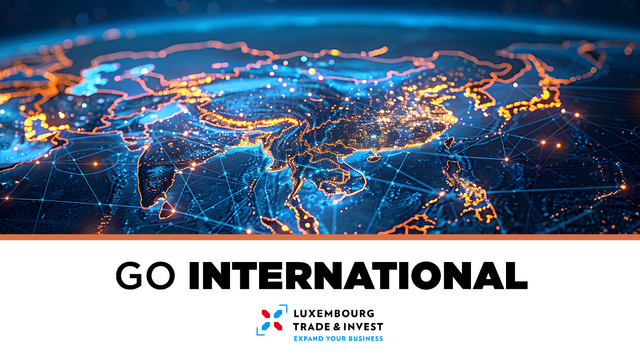
Chapters
The inhabitants of the area of Oman have long prospered from Indian Ocean trade. In the late 18th century, the nascent sultanate in Muscat signed the first in a series of friendship treaties with Britain. Over time, Oman's dependence on British political and military advisors increased, although the Sultanate never became a British colony. In 1970, QABOOS bin Said Al-Said overthrew his father, and has since ruled as sultan, but he has not designated a successor. His extensive modernization program has opened the country to the outside world, while preserving the longstanding close ties with the UK and US. Oman's moderate, independent foreign policy has sought to maintain good relations with its neighbors and to avoid external entanglements.
Inspired by the popular uprisings that swept the Middle East and North Africa beginning in January 2011, some Omanis staged demonstrations, calling for more jobs and economic benefits and an end to corruption. In response to those protester demands, QABOOS in 2011 pledged to implement economic and political reforms, such as granting legislative and regulatory powers to the Majlis al-Shura and increasing unemployment benefits. Additionally, in August 2012, the Sultan announced a royal directive mandating the speedy implementation of a national job creation plan for thousands of public and private sector Omani jobs. This initiative took on new urgency in December 2017, when QABOOS instructed the government to create 25,000 new jobs in the public and private sectors for Omanis. As part of the government's efforts to decentralize authority and allow greater citizen participation in local governance, Oman successfully conducted its first municipal council elections in December 2012. Announced by the Sultan in 2011, the municipal councils have the power to advise the Royal Court on the needs of local districts across Oman's 11 governorates. The Sultan returned to Oman in March 2015 after eight months in Germany, where he received medical treatment.
Source: The CIA World Factbook - Oman
Key indicators
- Area
- 309,500 sq km
- Population
- 3,694,755 (July 2021 est.)
- Government type
- absolute monarchy
- Languages
- Arabic (official), English, Baluchi, Urdu, Indian dialects
- GDP
- $76.332 billion (2019 est.)
- Growth rate
- -0.8% (2019 est.)
- HDI
- 60
- Capital
- muscat
Macroeconomic indicators
Oman is heavily dependent on oil and gas resources, which can generate between and 68% and 85% of government revenue, depending on fluctuations in commodity prices. In 2016, low global oil prices drove Oman’s budget deficit to $13.8 billion, or approximately 20% of GDP, but the budget deficit is estimated to have reduced to 12% of GDP in 2017 as Oman reduced government subsidies. As of January 2018, Oman has sufficient foreign assets to support its currency’s fixed exchange rates. It is issuing debt to cover its deficit.
Oman is using enhanced oil recovery techniques to boost production, but it has simultaneously pursued a development plan that focuses on diversification, industrialization, and privatization, with the objective of reducing the oil sector's contribution to GDP. The key components of the government's diversification strategy are tourism, shipping and logistics, mining, manufacturing, and aquaculture.
Muscat also has notably focused on creating more Omani jobs to employ the rising number of nationals entering the workforce. However, high social welfare benefits - that had increased in the wake of the 2011 Arab Spring - have made it impossible for the government to balance its budget in light of current oil prices. In response, Omani officials imposed austerity measures on its gasoline and diesel subsidies in 2016. These spending cuts have had only a moderate effect on the government’s budget, which is projected to again face a deficit of $7.8 billion in 2018.
Source: The CIA World Factbook - Economic Overview
IMF Statistics
Source: IMF Statistics - Oman
Relationships with Luxembourg
Existing conventions and agreements
Non double taxation agreement
In order to promote international economic and financial relations in the interest of the Grand Duchy of Luxembourg, the Luxembourg government negotiates bilateral agreements for the avoidance of double taxation and prevent fiscal evasion with respect to Taxes on Income and on fortune with third countries.
None
Air Services agreement
None
Further information
Foreign Trade
The Statec Foreign Trade statistics provide information on the trade of goods - by product and by country. This information is collected respectively through the INTRASTAT declaration and on the basis of customs documents.
You can see the statistics on the website of the Statec.
Contact points in Oman
Luxembourg is represented by Ambassade Royale des Pays-Bas à Mascate
Honorary Consul with jurisdiction over the Sultanate of Oman:
Mr Adil Bin Saeed AL SHANFARI
Shanfari Group of Companies
PO Box 783, PC 100
Al Khuwair Street,
Muscat
Sultanate of Oman
Tel.: (+968) 22506021
E-Mail: muscat@consul-hon.lu
Source: Ministry of Foreign Affairs of Luxembourg
Luxembourg Trade and Investment Office in Abu Dhabi
Mr Loic Bertoli
Appt. 6201, 62nd Floor
Nation Tower Residences, Corniche Road
P.O. Box 44909
Abu Dhabi
United Arab Emirates
Tel.: (+971) 24 91 24 46
E-Mail: ltio.abudhabi@mae.etat.lu
Source: Luxembourg Trade&Investment Office (LTIO)
Country risk as defined by Office du Ducroire for Oman
Ducroire is the only credit insurer covering open account deals in over 200 countries. A rating on a scale from 1 to 7 shows the intensity of the political risk. Category 1 comprises countries with the lowest political risk and category 7 countries with the highest. Macroeconomics experts also assess the repayment climate for all buyers in a country.
Link: Ducroire Office - Country Risk for Oman
Other useful Links
- The CIA World Factbook on Oman
- L'Oman sur le site de l'AWEX
- Présentation de l'Oman par trésor
- Doing Business in Oman
- Oman Chamber of Commerce and Industry




